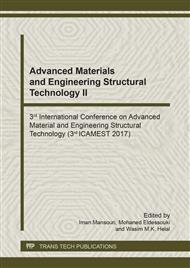p.44
p.49
p.54
p.59
p.65
p.75
p.80
p.85
p.90
Upgrading the Ti/TiN Film Depositions on KP-1 Steel by Using the Anode Ring Bias Voltage
Abstract:
By newly adopting of a two-step bias voltage-sustained nitrification of the plasma process the titanium nitride films which applied to the mold base steel KP-1 are manufactured. The two-step process of biased voltages was introduced in order to consider microscopic kinematics of Ti ion bombardments which lead to a deep study on the plasmas including surface temperature of substrates associated with nitrification the KP-1 surface. For supplying of the additional biased voltage to the conventional coater, an anode-biased ring was installed near the plasma source and it ultimately upgraded the typical method of physical vapor depositions which uniquely adopted one bias voltage applied to the substrates because the additional ring controlled both ions and electrons effectively in order to improve surface smoothness and to increase surface hardness with various values of surface temperatures of substrate and deposition times. The discharge ionic current of titanium flux was measured as functions of both the ring bias voltage and the substrate voltage using single probe. By using plasma physics for the two-step bias voltages the discrete mean-free-times, due to cyclonic motions of ions by magnetic field, were studied to show the effects of two bias voltages. The maximal hardness increase of Ti/TiN films deposited on KP-1 was 370% when the surface temperature was 370 °C, the substrate bias voltage of 800volts, and the deposition time was 55 minutes after ring bias was applied. The 2000 times-magnified cross-sectional morphologies of TiN films deposited on the carbon mold base KP-1 were taken as a function of the ring anode bias. The 1000 times-magnified photograph of the TiN-filmed surface deposited on KP-1 mold base was taken to investigate the surface morphology. In order to examine the two-step bias test with respect to both the corrosion problem and the surface hardness, the 2000 times-magnified morphological photograph of a cross-sectional Ti/TiN film which was deposited on the KP-1steel mold was taken.
Info:
Periodical:
Pages:
65-74
Citation:
Online since:
March 2018
Authors:
Price:
Сopyright:
© 2018 Trans Tech Publications Ltd. All Rights Reserved
Share:
Citation:


